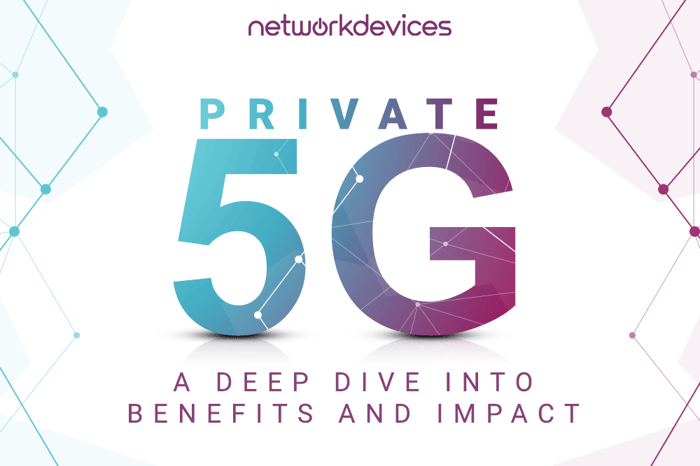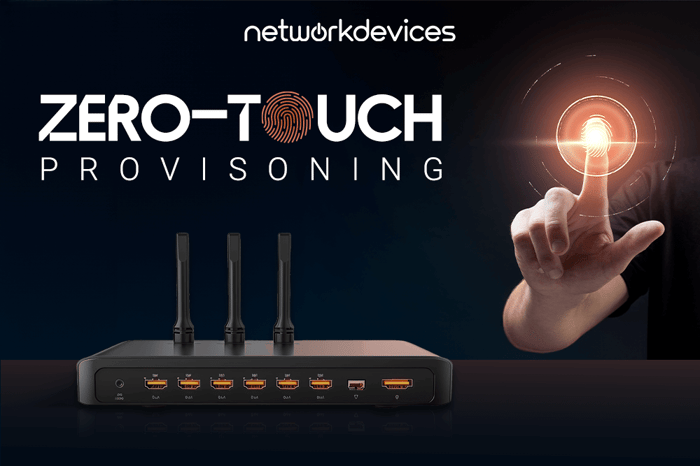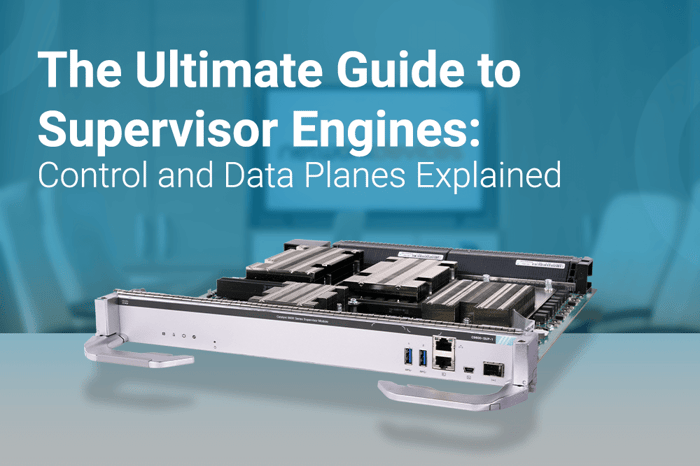You have no items in your shopping cart.

Inside Private 5G: A Deep Dive Into Benefits and Impact
Imagine a world where business operations are seamlessly integrated with high-speed, ultra-reliable, and secure networks – this is the reality that private 5G networks can deliver. Recently, private 5G has emerged as a groundbreaking technology for businesses and industrial sectors.
This surge in demand stems from the need for enhanced wireless communication that is secure, reliable, and versatile. This detailed article explains what private 5G is, how it works, its benefits, and its potential to reshape the future.
“By 2030, the private 5G network industry is projected to grow from its 2022 valuation of $1.92B to a whopping $27.87B.”
What is 5G Technology?
5G, short for the fifth generation of mobile network technology, is considered a breakthrough. 5G aims to provide over ten times the data speeds compared to previous generations while minimizing delays, increasing carrying capacity, and strengthening connection stability.
“Forecasts indicate that the private 5G network industry would grow at a CAGR of 39.7 percent between 2022 and 2030.”
A new standard has been introduced to pave the way for a broad range of end-to-end autonomous use cases, including self-driving cars, smart cities, and the Internet of Things (IoT).
The Evolution of 5G Technology
5G is the progression of current mobile technologies from the last few years, which has seen significant jumps in speed, capacity, and connectivity from previous technologies. Starting in the early 2010s, 5G was laid down to overcome the 4G barriers and enhance capabilities such as ubiquitous data rates, minimal latency, and excessive device connection abilities, which are vital for IoT, automobile automation, and augmented reality.
This evolution covers not only many technical aspects, such as new radios and new network architectures, but also the changes at the spectrum level and in infrastructures; it has the potential to profoundly transform the way people engage with technology across virtually all domains of modern life.

Key Characteristics of 5G
· Speed: 5G networks offer a download rate of up to 10Gbps, revolutionizing UHD video streaming and rapid data transfer.
· Low latency: It reduces network latency to as short as one millisecond, crucial for remote operations and self-driving cars.
· Bandwidth: 5G's lower end-to-end latency compared to 4G supports more connections per square kilometer, essential for the Internet of Things (IoT).
· Capacity: Enhanced communication capacity allows better data transfer and more connections in densely populated areas.
Comparison with Previous Generations
Exploring the transition from 1G to 4G helps offer insights into the foundations that distinguish 5G.
1G (1980s): The first generation implemented isolated voice transmission by analog signals, thus enabling the first mobile calls.
2G (1990s): The second generation provided voice through Digital Improved Voice Telephony (iVT) and digital communication services such as Short Messaging Service (SMS) and Multimedia Messaging Service (MMS).
3G (2000s): The third generation offered voice calls over the Internet, movement from Internet-based voice calls to video calls, and higher data share speeds.
4G (2010s): The fourth generation of networks offered broader bandwidths, support of high-definition video streaming, and better connectivity, which helped to develop today's mobile applications.
Unique Features of 5G Technology
· Millimeter Waves: Utilizes multiple frequency bands to deliver high data rates.
· Small Cells: Employs low-profile transmitter/receiver stations to boost coverage and capacity in dense areas.
· Massive MIMO (Multiple Input, Multiple Output): It uses many antennas at the base stations to enhance the signal power as well as the rate of data.
· Beamforming: Targets particular users to provide better quality signals and these reduce interference.
· Network Slicing: Allows the creation of multiple virtual networks on a single 5G infrastructure, each optimized for specific applications or services.

Core Components of 5G
1. Spectrum
· Low-band (Sub 1 GHz): Provides extensive geographical reach with high network density, especially in the rural zones and urban centers, although at slower data rates compared to 3G networks.
· Mid-band (1-6 GHz): It strikes a good balance between coverage and capacity, considered appropriate for urban and suburban use with average speed and a considerable range.
· High-band (mmWave, above 24 GHz): Features incredibly high speeds and connectivity, although it lacks coverage and popularity in rural and densely populated areas used indoors.
2. Network Architecture
· Small Cells: Smaller transmitting stations or cells focus on boosting coverage and capacity, especially in the severely congested urban geography. They serve as an addition to the conventional macro cells that support mobile stations with a large demand for operational coverage.
· Massive MIMO: Incorporates diverse transmitters in the base station and user types of equipment to increase overall data rate and capacity to allow more rational spectrum use.
· Beamforming: This focuses the signal toward specific users rather than broadcasting in every minute direction, enhancing the signal strength alongside boosting the functionality of the networks.
· Network Slicing: Enables several virtual networks to exist over a common physical 5G infrastructure and be optimized with a focus on performance and security that meets specific use cases, as discussed above.
Understanding Private 5G
Approximately one-third of all 5G connections—public, business, and private—could be standardized by 2025.

A private 5G network is a closed or local network created exclusively for an organization's use, offering tailored solutions for specific needs. While public 5G networks are accessible to everyone and operate under telecommunications operators' infrastructure, private 5G networks are dedicated to meeting specific company needs, offering enhanced control, security, and customization.
Public 5G Vs. Private 5G Networks
|
Public 5G Networks |
Private 5G Networks |
|
Telecom providers offer these services mainly targeted at the community, giving coverage to more people and offering essentially the same services. |
These global private networks of systems are required for particular activities or operations, thus providing private organizations or companies better control over the network resources, security, and performance than in the public networks. |
|
They exist to service various users and uses, including individual and business customers, but without the capacity to permit much differentiation. |
It can be installed on-premises, While others are installed as hybrids, and some are fully managed services.
|
Technical Aspects
Base Stations
The fundamental domains of the 5G infrastructure involve transmitting and receiving radio frequencies. The positions are set with a view of deployment in a manner that will grant maximum coverage and capacity.
Core Network
The physical 5G core network controls data localization, internetwork connection, mobility management, and service operations. On the other hand, it enables smooth networking by ensuring an efficient and fast data transfer within the network.
Edge Computing
This brings computing resources near the data source, reducing latency and allowing real-time data processing. This is very useful for instances where a swift data diagnosis is needed before making a concrete decision.
On-Premises Networks
The whole network system is contained within the organization’s limited internal environment, called Local Area Network, LAN. This model provides the highest level of control and security, but being the most complex, it has more cost implications and demands for network management.
Hybrid Networks
Integrates traditional physical infrastructure with virtual components; it provides a good mix of the ability to adjust and the need for substantial management of resources. It enables organizations to enjoy the merits of a private and a public network.
Managed Solutions
Operated via a third party, which, in this case, is responsible for managing the entire network. Integrating a centralized controller and incorporating small cells eliminates additional load on an organization's IT infrastructure but leaves all the advantages of a private 5G network intact.

Advantages of Private 5G
Enhanced Security and Privacy
· Dedicated Spectrum: Private 5G networks use a separate spectrum from public networks, ensuring a secure connection. This helps minimize the possibility of outsiders' intrusion and makes the network secure such that only those users and devices permitted to be on the network make it through.
· Improved Data Protection Mechanisms: Confidentiality measures entail using secure encryption and other security measures to secure the information exchange. This is especially crucial in the sectors that deal with sensitive data, such as the medical sector, businesses, and the government sector.
Operational Efficiency
· Lower Latency and Higher Reliability: These features are essential for use cases requiring real-time performance, such as industrial automation or self-driving cars.
· Optimized Resource Allocation and Network Management: The networks can be tailored or allocated depending on the needs or requirements of an organization.
Industry-Specific Applications
· Manufacturing: Private 5G brings smart factories where, through exchanging information between IoT devices, robots, and sensors, the aim is to advance smart capabilities within industrial operations. It also optimizes real-time monitoring, anticipative and predictive maintenance, and analysis.
· Healthcare: Supports digital and open surgery, constant patient observation, and telemedicine due to stable and secure connections. This translates into better patient outcomes, cost containment, and increased accessibility of health-enhancing medical services.
· Logistics: It applies to the automation of warehouse fleet management and allows tracking of the position of goods in real-time. Private 5G networks harness goals such as improving efficiency, increasing the availability of equipment or products, and optimizing value streams.
Transformative Potential of Private 5G Networks
The impact and potential of private 5G are quite vast since this approach shall bring closer the idea of advanced connection, security, and optimization of various industries’ operations.
It is essential to recognize that as private 5G networks merge with other complex technologies, such as AI and IoT, improved automation, proactive maintenance, and real-time intelligence will increase productivity and innovation. From an economic perspective, the advancement of the private 5G market will lead to a high flow of investments, develop new business paradigms, and employ thousands of people specializing in tech and telecommunication industries.
In addition, as the industry moves to 6G, noticeable changes will be made in aspects such as speed, latency, and capacity of the communications and connectivity systems. However, achieving these benefits will require authorities and policymakers to develop proper regulatory policies to provide spectrum and set international standards to work harmoniously on various networks within different continents.
Beyond The Horizon
Since 5G technology gradually enters the private networks market and becomes more available, various companies and organizations must consider its inherent opportunities. From enhancing security and segmentation to unlocking new use cases and optimizing operations, private 5G represents the next level of digital transformation.
While not superior to all existing technologies, private 5G offers a novel approach to digitalizing processes, altering business structures and competitive strategies. Therefore, when an organization adopts this technology, it can benefit from being among the forerunners preparing to harness the power of an ever-intertwining global community for optimized success.













